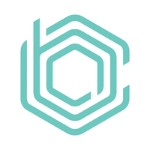What are disruptive innovation examples? Disruptive innovation examples include Netflix’s impact on video rentals, Uber’s transformation of transportation, and Amazon’s revolution of retail.
Disruptive innovation examples have become a buzzword in the business world. It refers to the process of introducing new products or services that disrupt the existing market and create a new one. The term was coined by Clayton Christensen in his book “The Innovator’s Dilemma,” where he explained how established companies often fail to adapt to disruptive technologies, leading to their downfall.
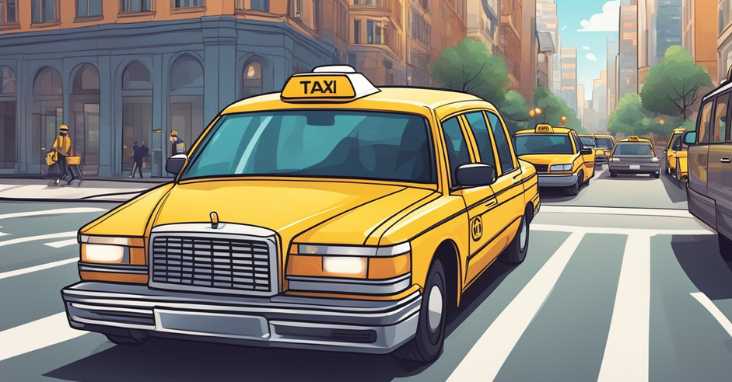
Understanding disruptive innovation examples is crucial for businesses to stay ahead of the competition. In this article, we will explore some historical disruptive innovation examples, industry analysis, technological advancements, and business model innovation. We will also discuss the role of startups and entrepreneurs in disruptive innovation, its impact on society and consumer behavior, and strategic responses to disruption.
By the end of this article, readers will have a better understanding of disruptive innovation examples and how it can affect their business. They will also gain insights into the future of disruptive innovation examples and the frequently asked questions surrounding this topic. With this knowledge, businesses can make informed decisions that will help them thrive in an ever-changing market.
Key Takeaways
- Disruptive innovation examples refers to the process of introducing new products or services that disrupt the existing market and create a new one.
- Understanding disruptive innovation examples is crucial for businesses to stay ahead of the competition.
- By exploring historical examples, industry analysis, and technological advancements, businesses can gain insights into the future of disruptive innovation and make informed decisions.
Understanding Disruptive Innovation Examples
Definition and Theory
Disruptive innovation examples is a term coined by Clayton Christensen in his book “The Innovator’s Dilemma.” It refers to a process by which a new product or service enters the market and disrupts the existing market by providing a cheaper, simpler, or more convenient alternative. Disruptive innovation examples can create new markets or disrupt existing ones, leading to the downfall of established companies.
The Work of Clayton Christensen
Clayton Christensen is a Harvard Business School professor and author of several books on innovation. He is widely recognized as the father of disruptive innovation theory. Christensen’s research has shown that companies that focus too much on improving their existing products or services often miss out on disruptive opportunities. He argues that companies should create separate divisions to focus on disruptive innovation examples, rather than trying to integrate it into their existing operations.
Differentiating Disruptive and Sustaining Innovation
Sustaining innovation, on the other hand, refers to the process of improving existing products or services to meet the needs of existing customers. Sustaining innovation helps companies maintain their market position and fend off competition. However, it often leads to incremental improvements rather than disruptive breakthroughs.
It is important to differentiate between disruptive and sustaining innovation because they require different strategies. Companies that focus too much on sustaining innovation may miss out on disruptive opportunities, while those that focus too much on disruptive innovation may neglect their existing customers.
To learn more about disruptive innovation examples and Clayton Christensen’s work, check out this article on Harvard Business Review.
Historical Disruptive Innovation Examples
Disruptive innovation examples has been a driving force behind many of the technological advancements of the past few decades. In this section, we will explore some of the most notable historical disruptive innovation examples and their impact on various industries.
The Rise of Personal Computers
The introduction of personal computers in the 1980s was disruptive innovation examples that changed the way people work and communicate. Companies like Apple and IBM were at the forefront of this revolution, introducing affordable and user-friendly computers that could be used by individuals and small businesses.
Personal computers allowed people to perform tasks that were previously only possible with large mainframe computers, such as word processing, spreadsheet calculations, and graphic design. The widespread adoption of personal computers paved the way for the internet and the digital age that we know today.
The Impact of Smartphones
Smartphones are other disruptive innovation examples that has transformed the way people live and work. Apple’s iPhone, introduced in 2007, was the first smartphone to combine a touch screen, internet connectivity, and a range of apps in one device.
Smartphones have revolutionized the way people communicate, access information, and entertain themselves. They have also had a significant impact on industries such as photography, music, and gaming, disrupting traditional business models and creating new opportunities for entrepreneurs.
Streaming Services Revolution
The rise of streaming services like Netflix has been a disruptive force in the entertainment industry, challenging traditional cable and broadcast TV models. Netflix’s subscription-based model allows users to access a vast library of movies and TV shows at a fraction of the cost of cable TV.
Streaming services have also changed the way content is produced and distributed, giving independent filmmakers and producers a platform to reach a global audience. The success of streaming services has led to the emergence of new players in the market, such as Amazon Prime Video and Disney+, further disrupting the entertainment industry.
In conclusion, these historical disruptive innovation examples demonstrate the power of technology to transform industries and create new opportunities for growth and innovation. As technology continues to evolve at a rapid pace, we can expect to see new disruptive innovation examples that will shape the future of our world.
Industry Analysis
Innovation and disruption are two of the most important factors driving growth and progress in modern industries. This section will examine some of the most notable disruptive innovation examples across a range of industries, including healthcare, retail and e-commerce, manufacturing, and education.
Healthcare Disruption
The healthcare industry has seen a range of disruptive innovation examples in recent years, from telemedicine and wearable health devices to genetic testing and precision medicine. These innovations have the potential to transform the way healthcare is delivered, making it more personalized, efficient, and accessible.
One example of a company driving healthcare disruption is Amazon, which has recently launched a range of healthcare initiatives, including its Amazon Care program for employees and its acquisition of online pharmacy PillPack. These moves have the potential to disrupt the traditional healthcare industry and create new opportunities for innovation and growth.
Retail and E-Commerce
The rise of e-commerce has disrupted the traditional retail industry, with companies like Amazon leading the way. In addition to offering greater convenience and lower prices, e-commerce has also enabled new business models, such as subscription-based services and direct-to-consumer brands.
One notable example of a disruptive e-commerce company is Warby Parker, which has disrupted the eyewear industry by offering affordable, stylish glasses online. By cutting out the middleman and selling directly to consumers, Warby Parker has been able to offer high-quality glasses at a fraction of the cost of traditional retailers.
Manufacturing Innovations
Advances in technology and automation have enabled a range of disruptive innovation examples in the manufacturing industry, from 3D printing and robotics to artificial intelligence and the Internet of Things. These innovations have the potential to transform the way products are designed, produced, and distributed, making manufacturing more efficient, sustainable, and flexible.
One example of a company driving manufacturing innovation is General Electric, which has invested heavily in 3D printing technology to produce complex parts for its aircraft engines. By using 3D printing, GE has been able to reduce costs, improve quality, and speed up production.
Education Sector Transformation
The education sector has also seen a range of disruptive innovation examples in recent years, from online learning platforms and personalized learning tools to gamification and virtual reality. These innovations have the potential to transform the way education is delivered, making it more accessible, engaging, and effective.
One example of a company driving education sector transformation is Coursera, which offers online courses from top universities and industry leaders. By leveraging technology and partnerships with leading institutions, Coursera has been able to democratize access to education and offer learners around the world the chance to develop new skills and knowledge.
External Resource
For more information on disruptive innovation examples, check out this article from Harvard Business Review.
Technological Advancements
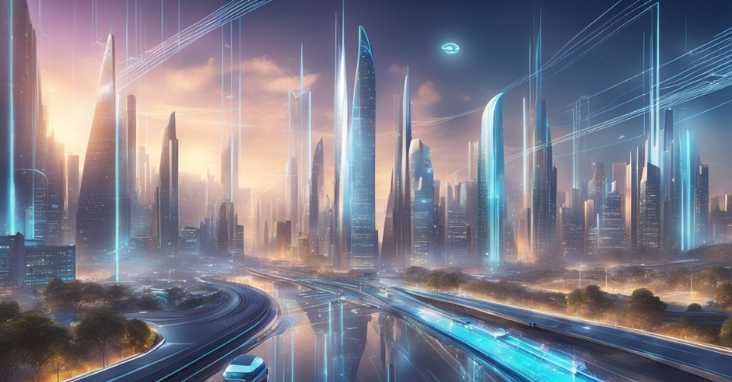
With the rapid pace of technological advancements, businesses are constantly challenged to innovate and adapt to stay competitive. Here are some examples of disruptive technologies that are changing the game in various industries.
Artificial Intelligence and Machine Learning
Artificial intelligence (AI) and machine learning (ML) are revolutionizing the way businesses operate. AI and ML algorithms can analyze large amounts of data and provide insights that were previously impossible to obtain. From predictive maintenance in manufacturing to personalized marketing in retail, AI and ML are being used to automate processes and improve efficiency.
One example of AI in action is the chatbot. Chatbots are computer programs that use natural language processing (NLP) to simulate human conversation. They are being used in customer service to provide quick and efficient responses to inquiries. According to a report by Grand View Research, the global chatbot market size is expected to reach USD 1.25 billion by 2025.
Blockchain and Cryptocurrencies
Blockchain is a decentralized ledger technology that allows for secure and transparent transactions without the need for intermediaries. Cryptocurrencies like Bitcoin and Ethereum are built on blockchain technology and are disrupting the traditional financial system.
Blockchain has the potential to revolutionize industries beyond finance, such as supply chain management and healthcare. For example, in the supply chain industry, blockchain can provide transparency and traceability, allowing consumers to track the journey of their products from farm to table.
3D Printing
3D printing, also known as additive manufacturing, is a process of creating three-dimensional objects from a digital file. It has the potential to revolutionize manufacturing by reducing waste and increasing customization.
One example of 3D printing in action is in the healthcare industry. 3D printing is being used to create customized prosthetics and implants for patients. According to a report by MarketsandMarkets, the global 3D printing market size is expected to reach USD 34.8 billion by 2024.
Virtual Reality
Virtual reality (VR) is a technology that enables users to experience a computer-generated environment as if they were actually there. It has the potential to revolutionize industries such as gaming, education, and healthcare.
One example of VR in action is in the training of medical professionals. VR can provide a safe and controlled environment for medical students to practice procedures and surgeries. According to a report by Grand View Research, the global virtual reality market size is expected to reach USD 62.1 billion by 2027.
In conclusion, these technological advancements are just a few examples of how emerging technologies are disrupting traditional industries. As businesses continue to innovate and adapt, we can expect to see even more exciting developments in the future.
Here is a link to IBM’s explanation of Artificial Intelligence and Machine Learning.
Business Model Innovation

Business model innovation refers to the development of new and innovative ways to create, deliver, and capture value in the marketplace. It involves fundamentally rethinking the way a company operates and generates revenue. This type of innovation can be a powerful tool for startups looking to disrupt established industries and create new opportunities.
Low-End Disruption
Low-end disruption occurs when a new entrant to a market targets the low end of the market, typically by offering a product or service that is cheaper and more basic than what is currently available. This type of disruption can be particularly effective in industries where customers are price-sensitive and willing to sacrifice quality for a lower price. For example, the rise of low-cost airlines such as Ryanair and EasyJet disrupted the traditional airline industry by offering no-frills flights at significantly lower prices.
New Market Disruption
New market disruption occurs when a company creates a new market or enters an existing market with a product or service that is fundamentally different from what is currently available. This type of disruption can be particularly effective in industries that are ripe for innovation and where customers are looking for new solutions to old problems. For example, the rise of ride-sharing services such as Uber and Lyft disrupted the traditional taxi industry by offering a more convenient and flexible alternative.
Value Network Disruption
Value network disruption occurs when a company disrupts the way value is created and delivered in an industry by changing the relationships between suppliers, distributors, and customers. This type of disruption can be particularly effective in industries where there are complex value chains and opportunities to create new efficiencies. For example, the rise of online marketplaces such as Amazon disrupted the traditional retail industry by creating a new value network that connected buyers and sellers directly.
Overall, business model innovation can be a powerful tool for startups and established companies alike to create new opportunities and disrupt established industries. By rethinking the way value is created, delivered, and captured, companies can create new markets, lower costs, and deliver better products and services to customers. For more information on disruptive innovation examples, check out Harvard Business Review’s article on the topic.
The Role of Startups and Entrepreneurs

Startups and entrepreneurs play a crucial role in disruptive innovation examples. They are often the ones who identify gaps in the market and come up with innovative solutions to address them. In fact, many of the most successful disruptive innovations have come from startups and smaller companies rather than established industry players.
Challenges for New Entrants
However, startups and entrepreneurs face significant challenges when trying to disrupt established markets. One of the biggest challenges is overcoming the barriers to entry that exist in many industries. These barriers can include high capital requirements, regulatory hurdles, and established networks of suppliers and distributors.
Another challenge is convincing investors to back their ideas. Many investors are risk-averse and prefer to invest in established companies with proven track records. This can make it difficult for startups and entrepreneurs to secure the funding they need to develop and market their products.
Success Factors for Disruptive Startups
Despite these challenges, there are several success factors that can help startups and entrepreneurs succeed in disrupting established markets. One of the most important is having a deep understanding of the market they are trying to disrupt. This includes understanding the needs and wants of customers, as well as the strengths and weaknesses of existing products and services.
Another key success factor is having a strong team with a diverse skill set. This can include individuals with expertise in areas such as product development, marketing, and finance. Having a strong team can help startups and entrepreneurs navigate the challenges they will inevitably face and make the most of the opportunities that arise.
Finally, it is important for startups and entrepreneurs to be agile and adaptable. Disruptive innovation examples are a dynamic process, and startups and entrepreneurs need to be able to pivot quickly in response to changing market conditions. This requires a willingness to experiment, take risks, and learn from failures.
For more information on the role of startups and entrepreneurs in disruptive innovation examples, check out this article from Harvard Business Review.
Impact on Society and Consumer Behavior

Disruptive innovation examples has had a significant impact on society and consumer behavior. In this section, we will explore two key areas where disruptive innovation examples has brought about changes: Accessibility and Affordability, and Changing Consumer Expectations.
Accessibility and Affordability
Disruptive innovation examples has made products and services more accessible and affordable to a wider range of consumers. For instance, the rise of digital technologies has made it possible for people to access services and products from anywhere in the world. This has made it easier for people living in remote areas to access healthcare, education, and financial services.
Moreover, disruptive innovation examples has made it possible for companies to offer products and services at lower prices. For example, companies like Amazon and Walmart have disrupted the retail industry by offering products at lower prices than traditional brick-and-mortar stores. This has made it possible for consumers to purchase products at more affordable prices.
Changing Consumer Expectations
Disruptive innovation examples has also changed consumer expectations. Consumers now expect products and services to be more convenient, personalized, and offer a better customer experience. For instance, companies like Uber and Airbnb have disrupted the transportation and hospitality industries by offering more convenient and personalized services.
Furthermore, disruptive innovation examples has made it possible for companies to offer products and services that are more tailored to the needs of individual customers. For example, companies like Netflix and Amazon have disrupted the entertainment industry by offering personalized recommendations based on a customer’s viewing history.
In conclusion, disruptive innovation examples has had a significant impact on society and consumer behavior. It has made products and services more accessible and affordable, and has changed consumer expectations. As disruptive innovation examples continues to evolve, it is likely that we will see even more changes in the way we live, work, and consume products and services.
Here is a link to Investopedia’s definition of disruptive innovation examples.
Strategic Responses to Disruption
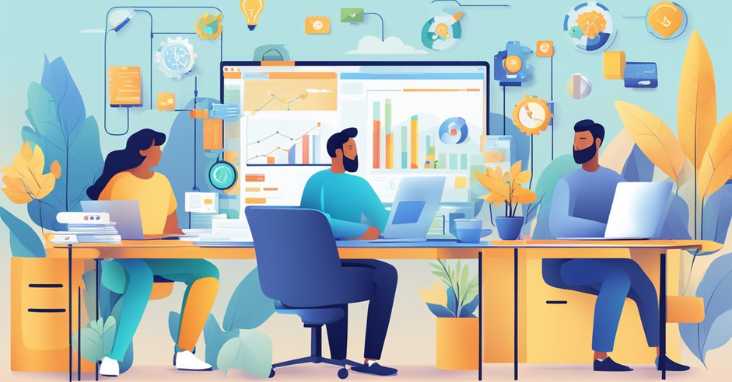
As disruptive innovation examples continue to shake up established industries, incumbent companies must develop effective strategies to stay competitive and maintain their market share. This section explores some of the strategic responses that established businesses can use to adapt to a changing market landscape.
Incumbent Companies’ Strategies
Incumbent companies face a unique set of challenges when it comes to responding to disruption. On the one hand, they have the advantage of established brand recognition and customer loyalty. On the other hand, they may be burdened by legacy systems and processes that make it difficult to pivot quickly in response to new market trends.
One common strategy for incumbent companies is to acquire or partner with startups that are disrupting their industry. This allows established businesses to tap into the innovative ideas and technologies of startups while leveraging their own resources and market position. For example, in 2018, Walmart acquired the online retailer Jet.com to bolster its e-commerce capabilities and compete more effectively with Amazon.
Another strategy is to invest in research and development to create new products or services that can compete with disruptive innovators. This may involve developing entirely new business models or leveraging emerging technologies to create new value for customers. For example, in response to the rise of ride-sharing services like Uber and Lyft, traditional taxi companies have developed their own mobile apps and digital platforms to streamline the booking process and improve the customer experience.
Adapting to a Changing Market Landscape
In addition to developing new strategies, incumbent companies must also be willing to adapt to a changing market landscape. This may involve rethinking their business models, streamlining their operations, or investing in new technologies to stay ahead of the curve.
One key element of adapting to disruption is understanding the needs and preferences of customers. By staying attuned to changing customer demands, established businesses can identify new opportunities and develop products and services that meet evolving market needs. For example, in the wake of the COVID-19 pandemic, many restaurants have shifted their focus to delivery and takeout services to meet the increased demand for contactless dining options.
Another important aspect of adapting to disruption is fostering a culture of innovation within the organization. This may involve empowering employees to take risks and experiment with new ideas, or creating dedicated innovation teams to explore emerging trends and technologies. By embracing a culture of innovation, established businesses can stay agile and responsive to changing market conditions.
According to a report by McKinsey, “established businesses that successfully navigate disruptive change are those that take a proactive approach to innovation, investing in new technologies and business models before they become mainstream.” By developing effective strategies and adapting to a changing market landscape, incumbent companies can position themselves for long-term success in the face of disruptive innovation examples.
Future of Disruptive Innovation
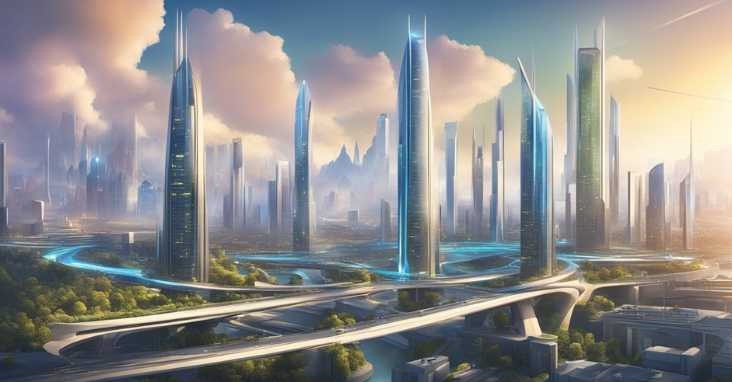
As technology continues to evolve at an unprecedented rate, the future of disruptive innovation examples is a topic of great interest. Companies are constantly seeking new ways to stay ahead of the curve and remain competitive in an ever-changing landscape. In this section, we will explore some potential areas of disruption and their potential long-term impact.
Predicting the Next Wave of Disruption
One of the biggest challenges facing companies today is predicting the next wave of disruption. While it is impossible to predict the future with certainty, there are a few emerging technologies that could potentially be the next big thing. Cloud computing, for example, has already disrupted the way that businesses operate and is likely to continue to do so in the future. As more and more companies move their operations to the cloud, there will be a growing demand for cloud-based services and applications.
Another area of potential disruption is the Internet of Things (IoT). As more and more devices become connected to the internet, there will be a growing need for companies to develop new products and services that take advantage of this connectivity. From smart homes to connected cars, the possibilities are endless.
Sustainability and Long-term Impact
As companies continue to innovate and disrupt traditional industries, there is a growing need to consider the long-term impact of these innovations. Sustainability is becoming an increasingly important factor in the decision-making process for many companies. From reducing carbon emissions to developing more sustainable products, there are many ways that companies can make a positive impact on the environment.
In addition to environmental sustainability, there is also a need to consider the long-term social and economic impact of disruptive technologies. While these technologies may bring about significant benefits, there are also potential risks and unintended consequences that need to be taken into account.
As companies continue to innovate and disrupt traditional industries, it is important to keep these factors in mind. By considering the long-term impact of their actions, companies can help to ensure a sustainable future for all.
Here is a link to an external resource that provides further insights into disruptive technologies.
Frequently Asked Questions
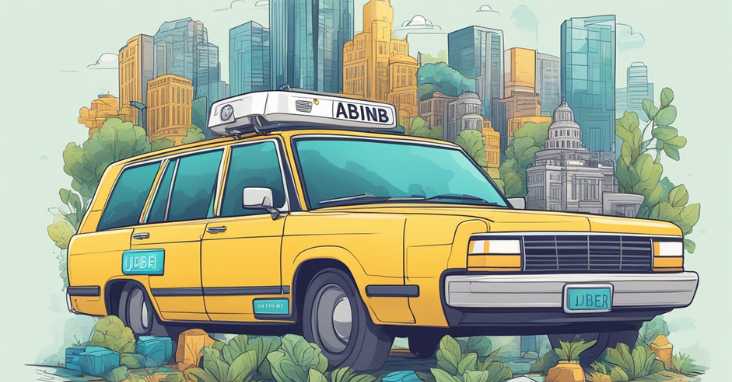
What are some notable examples of disruptive innovation in the tech industry?
The tech industry has seen several examples of disruptive innovation that have transformed the way we live and work. Some notable examples include the rise of smartphones, cloud computing, and social media. These innovations have disrupted traditional industries such as telecommunications, software, and advertising. Companies like Apple, Google, and Facebook have harnessed the power of these technologies to create new markets and redefine existing ones.
How have healthcare services been transformed by disruptive innovation?
Disruptive innovation has played a significant role in transforming the healthcare industry. From telemedicine to wearable devices, new technologies have made healthcare more accessible, affordable, and personalized. Companies like Teladoc, Fitbit, and 23andMe have leveraged disruptive innovation to create new business models and improve patient outcomes.
Can you identify a few low-end disruptive innovations that reshaped existing markets?
Low-end disruptive innovations are those that target underserved or overlooked segments of the market. These innovations often start small and gradually gain market share by offering a more affordable or convenient alternative to existing products or services. Some examples of low-end disruptive innovations include Southwest Airlines, which disrupted the airline industry by offering low-cost flights to regional destinations, and Craigslist, which disrupted the newspaper classifieds market by offering a free online alternative.
In what ways has disruptive innovation created entirely new markets?
Disruptive innovation has created entirely new markets by identifying unmet needs or creating new demand. For example, the rise of e-commerce has created a new market for online retailers, while the development of electric vehicles has created a new market for sustainable transportation. These innovations have disrupted traditional industries and created new opportunities for entrepreneurs and investors.
What are the defining characteristics that differentiate disruptive innovation from other types?
Disruptive innovation is characterized by several defining traits, including a focus on underserved or overlooked markets, a willingness to challenge established norms and practices, and a commitment to continuous improvement and innovation. Disruptive innovators often start small and gradually gain market share by offering a more affordable or convenient alternative to existing products or services. They also tend to prioritize speed and agility over stability and predictability.
How have companies like Netflix changed their industries through disruptive innovation?
Companies like Netflix have transformed their industries through disruptive innovation by identifying unmet needs and leveraging technology to create new business models. Netflix disrupted the traditional video rental market by offering a subscription-based streaming service that allowed customers to access a vast library of content on-demand. This innovation not only disrupted the video rental market but also paved the way for the rise of streaming services like Hulu and Amazon Prime.
Here is an article by Harvard Business Review that provides a comprehensive overview of disruptive innovation and its impact on various industries.





